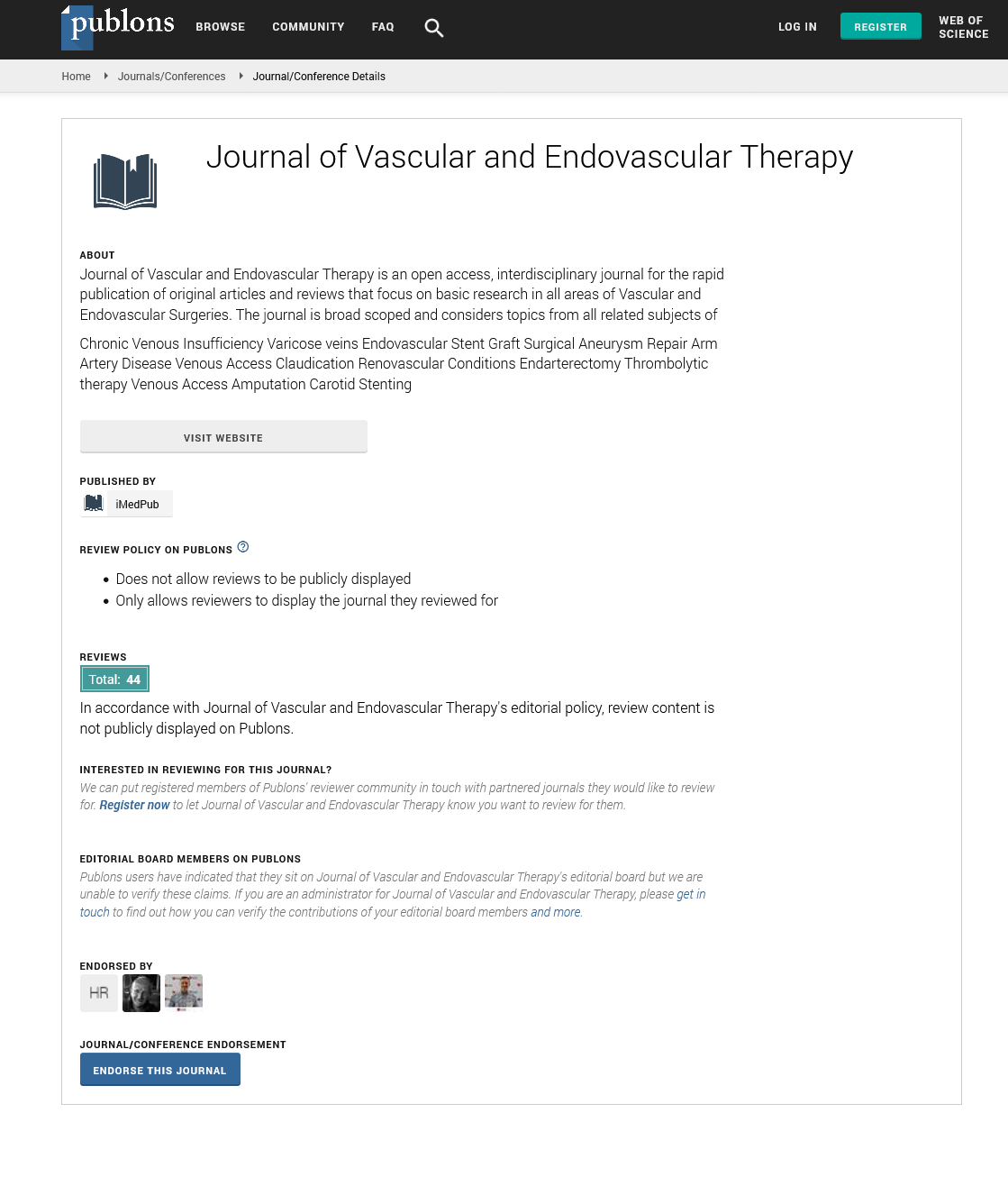ISSN : 2634-7156
Journal of Vascular and Endovascular Therapy
ROLE OF PET CT-IN ACUTE DEEP VEIN THROMBOSIS
7th Edition of World Congress & Exhibition on VASCULAR SURGERY
November 29-30, 2021 Webinar
*H V Lukka, Aditya N, Ranadheer M
*King George Hospital, India Gayatri University Hospital, India SVIMS, India
ScientificTracks Abstracts: J Vasc Endovasc Surg
Abstract
Venous thromboembolism (VTE), mostly presenting as deep vein thrombosis (DVT) and pulmonary embolism (PE), affects approximately 300,000 to 600,000 individuals and 60,000 to 100,000 die of VTE each year in the United States. Clinical symptoms of VTE are nonspecific and sometimes misleading. Additionally, side effects of available treatment plans for DVT are significant. Therefore, medical imaging plays a crucial role in proper diagnosis and avoidance from over/under diagnosis, which exposes the patient to risk. In addition to conventional structural imaging modalities, such as ultrasonography and computed tomography, molecular imaging with different tracers have been studied for diagnosis of DVT. In this review we will discuss currently available and newly evolving targets and tracers for detection of DVT using molecular imaging methods. Keywords FDG-PET/CT, venous thromboembolism, deep vein thrombosis, SPECT, molecular imaging.
Biography
Harivadan Lukka has completed his M.Ch ( Cardiovascular & Thoracic Surgery) at the age of 30 years from Sri Venkateshwara Institute of Medical Sciences, Tirupati, India and postdoctoral studies from Sir Ganga Ram hospitals, New Delhi, India . He is the Chairman/ director of Venkateshwara Vascular Foundation, a service organization. He has published more than 5 papers in reputed journals.
Google Scholar citation report
Citations : 177
Journal of Vascular and Endovascular Therapy received 177 citations as per Google Scholar report
Journal of Vascular and Endovascular Therapy peer review process verified at publons
Abstracted/Indexed in
- Google Scholar
- Open J Gate
- Publons
- Geneva Foundation for Medical Education and Research
- Secret Search Engine Labs
Open Access Journals
- Aquaculture & Veterinary Science
- Chemistry & Chemical Sciences
- Clinical Sciences
- Engineering
- General Science
- Genetics & Molecular Biology
- Health Care & Nursing
- Immunology & Microbiology
- Materials Science
- Mathematics & Physics
- Medical Sciences
- Neurology & Psychiatry
- Oncology & Cancer Science
- Pharmaceutical Sciences
